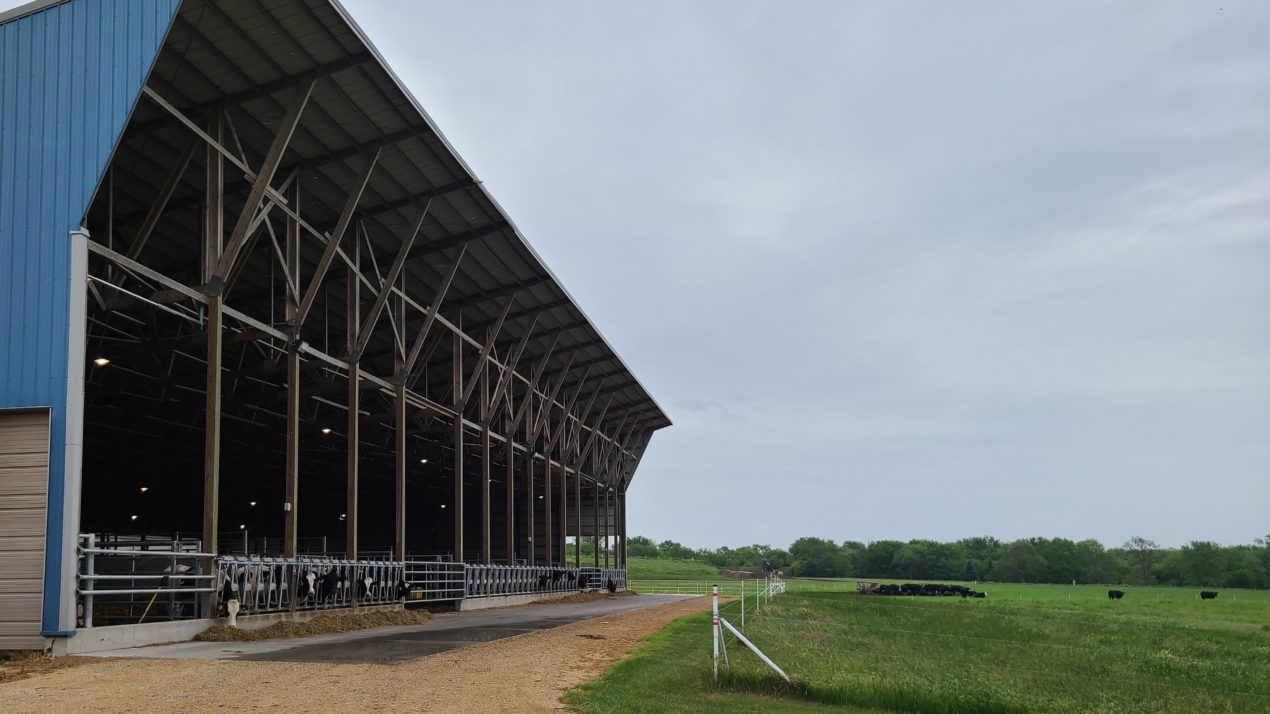
Normally, when you walk into a barn, you wouldn’t necessarily expect it to be as clean as your house or even your doctors office. But if you were to visit Blueprint Genetics in Janesville, Wisconsin you would see that it is pretty darn close! Blueprint Genetics is a bovine embryo transfer and donor facility that focuses primarily on beef cattle. When I stopped in, I was joined by co-owner and manager of the facility, Courtney Zehr, as well as embryo transfer veterinarian for Blueprint, Dr. Dan Gander to discuss how their facility serves cattle producers and why cattle reproduction is so important to the vitality and profitability of the industry.
The facility opened in 2017 with the goal of helping producers in the area maximize their genetic potential through the use of embryo transfer. After partnering with Boviteq and SVS Repro, they built the barn just southeast of Janesville, that can now house approximately 100 head of both beef and dairy cattle. Their primary focus is on beef cattle, and they work with many different breeds. One thing that makes them unique is their attention to detail and care of each individual animal. Cow comfort is top priority, as well as focusing on each donor or recipients individual needs and protocols while at the facility.
“Embryo transfer has been within our industry since the 1970’s,” says Gander. Over that time many changes and advancements have been made within the industry to improve success and maximize effectiveness. The concept of in-vitro fertilization and embryo transfer is also very similar to that process being used in humans. In contrast however, most often the process is used in humans to overcome reproductive infertility or problems, while in the cattle industry it is primarily used to amplify genetics of high quality animals and genetic lines by producing more offspring. Cattle producers look to these technologies to amplify genetics across their herd to increase good milk production, create quality carcass traits or produce top quality show animals.
Only a small percentage of beef and dairy producers around the state and nation use these technologies. Therefore, it is also the goal of vets like Gander to help operations focus on their reproductive success, whether that producer utilizes embryo transfer, artificial insemination or only natural service bull breeding to help maximize their profitability. A big focus is put on vaccinations and a proper nutrition and mineral plan, to make sure cows are healthy and fertile to be most productive. If producers are using a bull, making sure that animal is sound and healthy is a top priority as well. Even if producers don’t utilize embryo transfer, Gander also reminds that many of the top stud bulls or females that producers may purchase are often the result of that technology.
For those interested in using ET and reproductive technologies, Blueprint Genetics is here to help. They offer short or longer term housing for donors, a recipient cow purchase and buy-back program and the know-how to help your operation succeed. Zehr says they are always willing to answer questions about the process or help a new producer get started. The use of embryo transfer and cattle reproductive technologies will help to ensure the long term success of the beef and dairy industries, and assist in continuing forward in progress.

